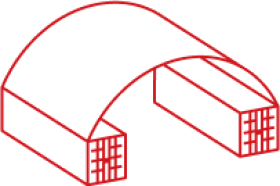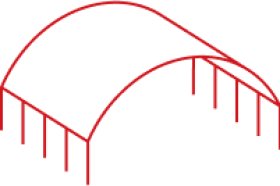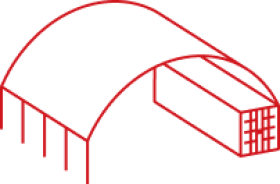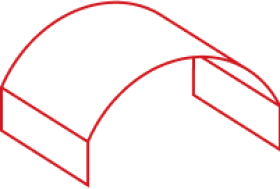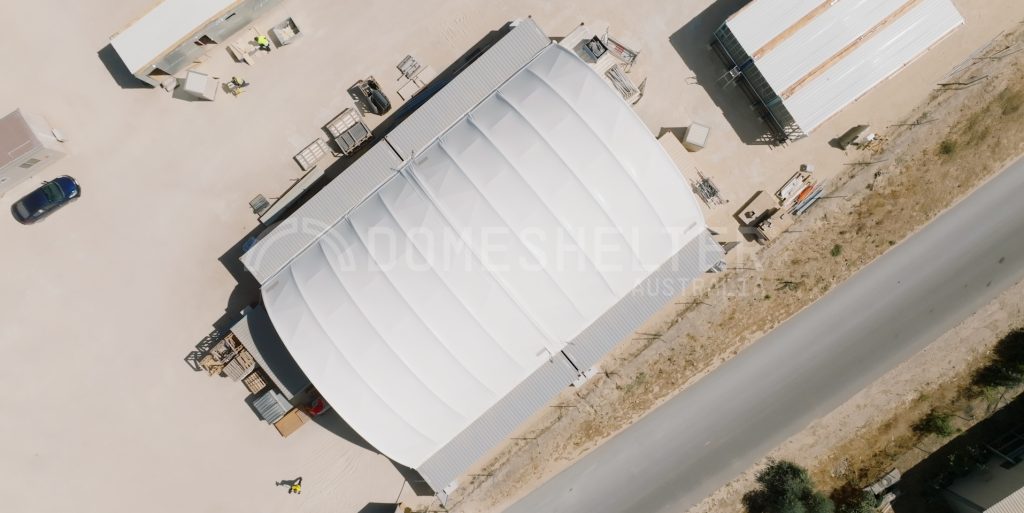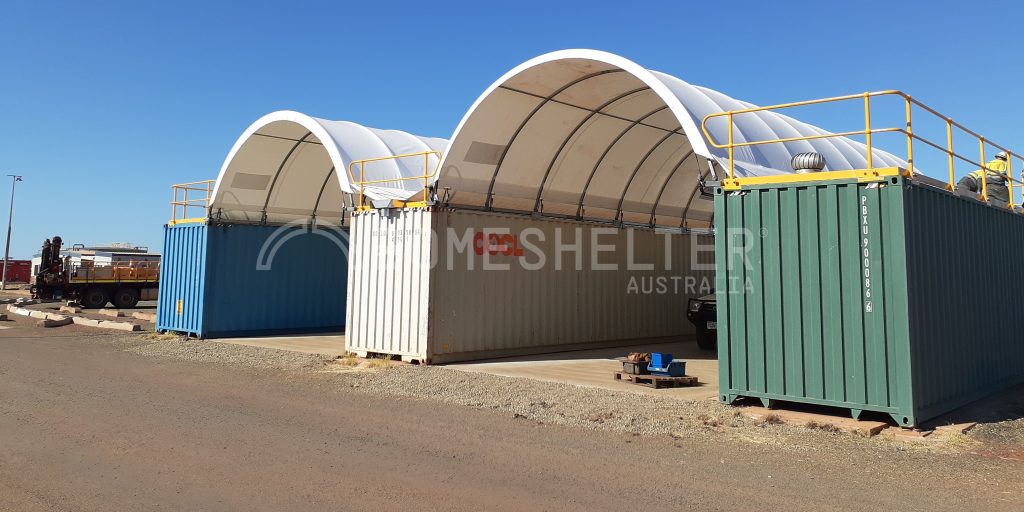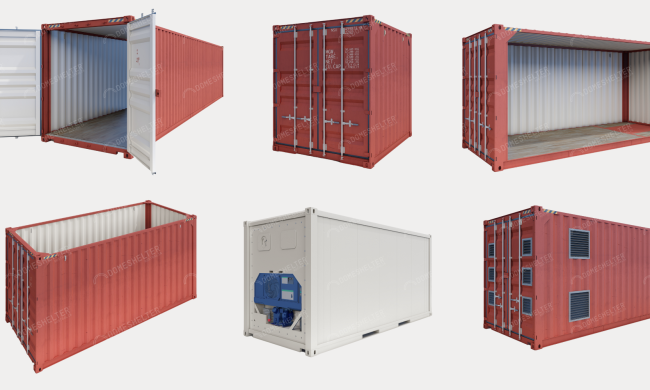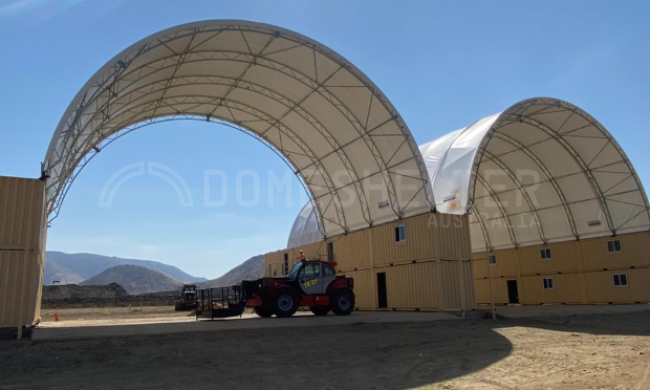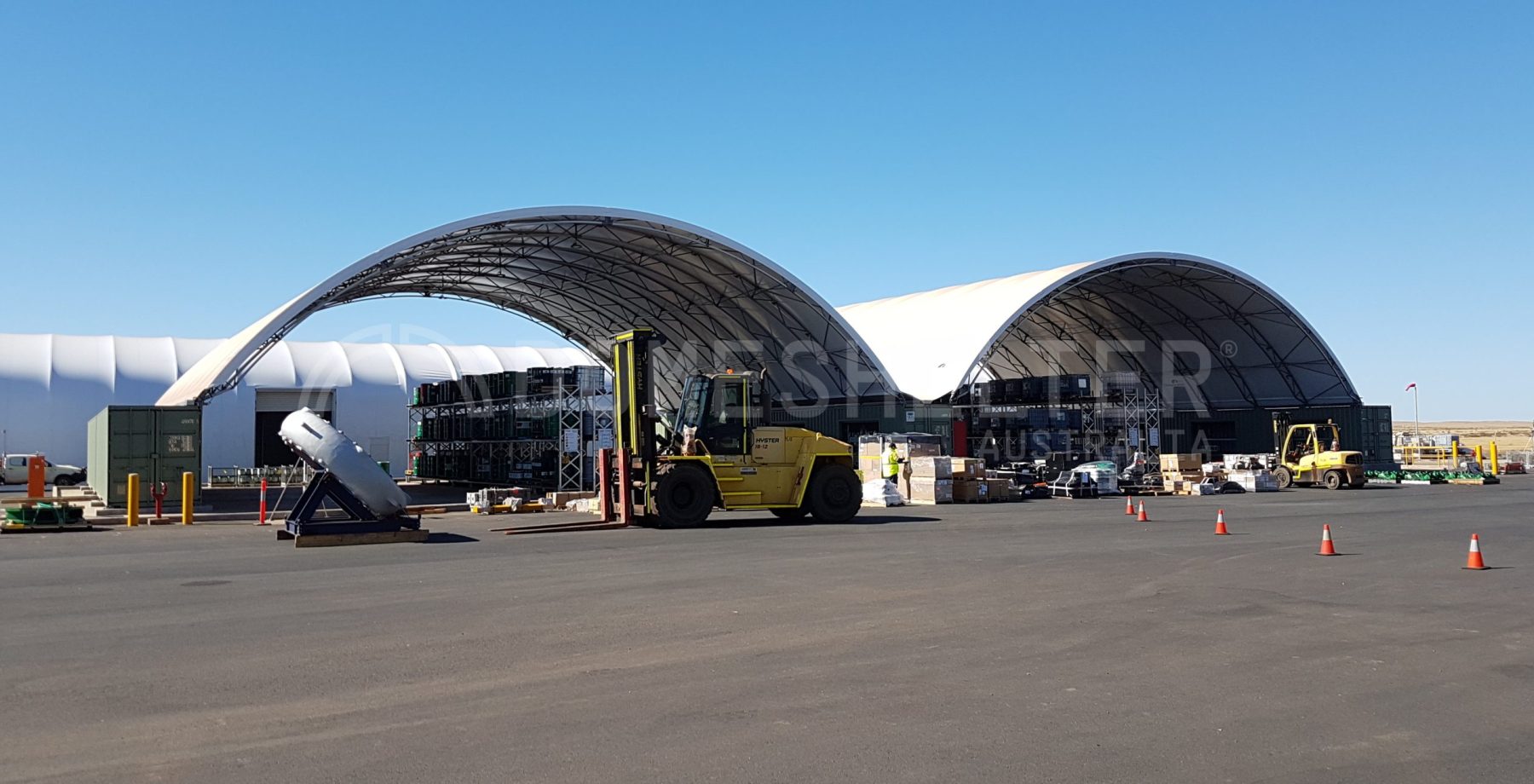
When it comes to considering the different fabric materials available for Fabric Shelters, it’s important to consider factors such as durability, waterproofing, and safety. There are two main fabric tarp materials typically available for Shelters: PE and PVC Fabric. Some Fabric Shelter manufacturers will offer Polyethylene fabric tarp, while others will manufacture their Shelters using PVC fabric. While both offer some benefits, there are key differences that you should be aware of before making a decision.
What is PE Fabric?
PE – Polyethylene – fabric tarp is made from a lightweight material consisting of woven scrim that is protected between two outer layers of plasticised coating. This type of fabric is treated with coatings containing protectants like UV inhibitors and fungicides, which are permanent components of the fabric and will last the lifetime of the fabric. Flame-retardant coatings are also available for added safety. PE is extremely durable and is naturally UV stable, whereas PVC needs UV inhibitors added to achieve the same protections. One of the key advantages of PE fabric is that it is non-toxic and self-cleans very well.
Quality certifications such as ISO 9001 are helpful indicators to ensure customers are looking at suppliers who are following or exceeding current manufacturing standards.
What is PVC Fabric?
PVC – Polyvinyl Chloride – fabric tarps are made from woven polyester fibers coated with a layer of PVC on both sides. While PVC fabric is also durable and waterproof, it is thicker than PE fabric, resulting in lower transparency and less light passing through to the inside of the structure. However, there are significant dangers associated with the use of PVC that should be taken into account.
The Dangers of PVC Fabric
A number of sources have identified significant dangers associated with the use of PVC.
Greenpeace released an extensive warning against the use of PVC materials in the early 2000s. According to their media release, “PVC contaminates humans and the environment throughout its lifecycle during its production, use, and disposal… PVC is the single most environmentally damaging of all plastics”. They also describe PVC as “the least recyclable of all plastics”.
The United States’ Cancer Institute has also published warnings against Vinyl Chloride exposure. According to their research, Vinyl Chloride is associated with an increased risk of liver, brain and lung cancers, as well as lymphoma, and leukemia.
PVC production is the largest and fastest-growing use of chlorine. Chlorine, as stated by Greenpeace, is the basic building block of the world’s most infamous toxic problems: CFCs which destroy the ozone layer, Agent Orange, PCBs and DDT pesticides. Most worryingly, a significant byproduct of PVC production are dioxins.
Dioxin and dioxin-like compounds are unintentionally created whenever chlorine-based chemicals are produced, used or burned. Large amounts of dioxin are produced during the various stages of PVC production. Dioxin is known as one of the most toxic chemicals ever produced.
The World Health Organisation has also released an article, outlining the significant dangers associated with dioxins. They describe dioxins as “a group of chemically related compounds that are persistent environmental pollutants (PEPs). They add that “PVC is responsible for a greater share [of dioxin production] than any other industrial product… Dioxin is known as one of the most toxic chemicals ever produced”. WHO goes on to detail how dioxins have been shown to affect a number of organs and systems in exposed populations and pose a risk to human health if exposure exceeds a certain level.
What About DomeShelter Australia’s Armourtex® Fabric Tarp?
DomeShelter™ Structures are manufactured using our flagship Armourtex® Polyethylene Fabric Tarp and are 100% PVC free. Our Armourtex® Fabric features a metallocene blended master batch, which gives it improved abrasion resistance, weld strength, welding speed, flexibility, water repellency and puncture resistance.
Fire Retardant tarp is also available for clients who require increased protection. This Fabric self-extinguishes when exposed to a naked flame. For more information about DomeShelter Australia’s fabric tarp, you can read the article on our website here: What Fabric Do DomeShelter™ Structures Use?
When on the market for a Fabric Structure, whether from DomeShelter Australia or another supplier, the two key questions you should ask your supplier about the Shelter’s Fabric Tarp are:
- Is the Fabric PE or PVC?
- What assurances related to the Fabric’s durability can you provide? Look out for things like ISO 9001 certifications and case studies of their past projects.
Get in Touch
If you have any further questions or are interested in a durable, PVC free Fabric Shelter for your worksite, get in touch with the DomeShelter™ team today.
